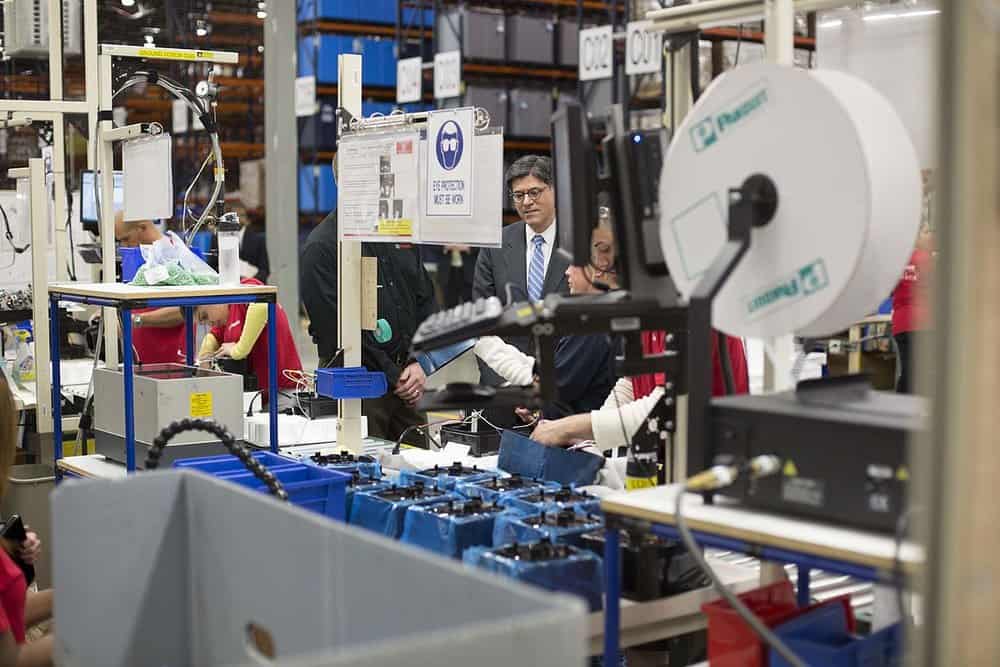
Following up on a campaign promise, President Donald Trump on Monday formally withdrew the United States from the controversial Trans-Pacific Partnership (TPP) trade deal. While the move was widely anticipated, one of the questions now being asked is how this will impact U.S. freight flows.
In a memorandum to the U.S. trade secretary, Trump outlined his intentions when it comes to trade. “It is the intention of my administration to deal directly with individual countries on a one-on-one (or bilateral) basis in negotiating future trade deals. Trade with other nations is, and always will be, of paramount importance to my administration and to me, as president of the United States,” he wrote.
TPP is a 12-nation free trade agreement that included the U.S and Japan, among other Asia-Pacific nations. Together, the group represents about 40% of the world’s economic output, according to the BBC. The pact – if ratified – was expected to lower restrictions in the free movement of goods among the member nations.
Japan’s Prime Minister Shinzo Abe previously said that a TPP without the U.S. and its large consumer base would not have the necessary value.
“Any positive long-term trade impact on U.S. shores may not have been as great as some believed, and it is what led many to question the value of further opening up the U.S. trade borders.”
In July of 2015, the Congressional Research Service produced an analysis of TPP for Congress. Authored by Brock R. Williams, the report noted the potential economic value of TPP to both the U.S. and Asia-Pacific region.
“The region is home to 40% of the world’s population, produces nearly 60% of global GDP, and includes some of the fastest growing economies in the world,” Williams wrote. “Including Canada, Mexico, and Japan, TPP negotiating partners made up 37% of total U.S trade in 2013, and the Asia-Pacific economies as a whole made up 57%.”
Williams said that the U.S. market made up 40% of the TPP current market. However, the report also noted that the non-U.S. TPP members had a population of 486 million, about 50% larger than the U.S. population, creating significant opportunity for U.S. exports.
Finally, the report noted that unlike most free trade agreements, the U.S. already trades freely with six of the TPP nations (Australia, Canada, Chile, Mexico, Peru, and Singapore), accounting for 82% of U.S. goods trade with TPP countries.
Any positive long-term trade impact on U.S. shores may not have been as great as some believed, and it is what led many to question the value of further opening up the U.S. trade borders.
Proponents of TPP, including former President Barak Obama whose administration negotiated the deal, believed that lower restrictions would increase trade among member nations and boost U.S. exports.
The U.S. had a trade deficit with Asia of $492.8 million in 2016, down slightly from 2015’s $549 million, according to data from Census.gov. In 2013, the Bureau of Transportation Statistics estimated that trucks moved 815 million tons of import and export goods. That was expected to nearly triple by 2040, the agency reported.
Opponents, which included both Republicans and Democrats in Congress in addition to Trump, believe free trade agreements hurt American manufacturing, ultimately costing jobs as U.S. companies source materials and finished products from overseas.
For the trucking industry, the immediate news is nothing will change. Since TPP had not gone into effect, and since the U.S. already has free trade agreements with many of the countries involved, the current shipment of goods will not be affected.
Opponents also have argued that without TPP, American businesses will be more likely to produce goods at home, thereby increasing domestic freight opportunities.
The true impact of what might have happened under TPP is unknown. While experts were split on the benefits of TPP, what the freight community knows today is that nothing has changed.










